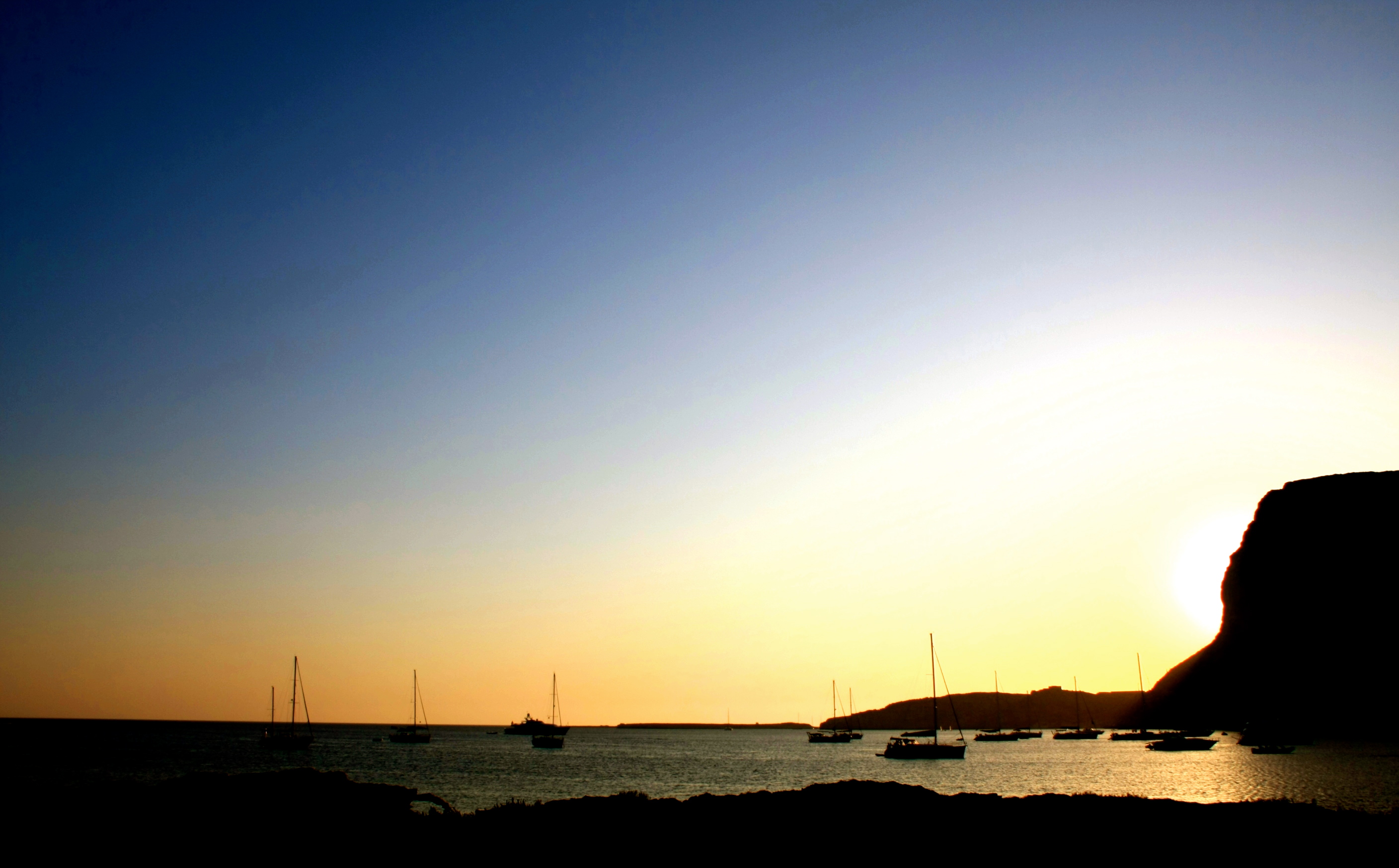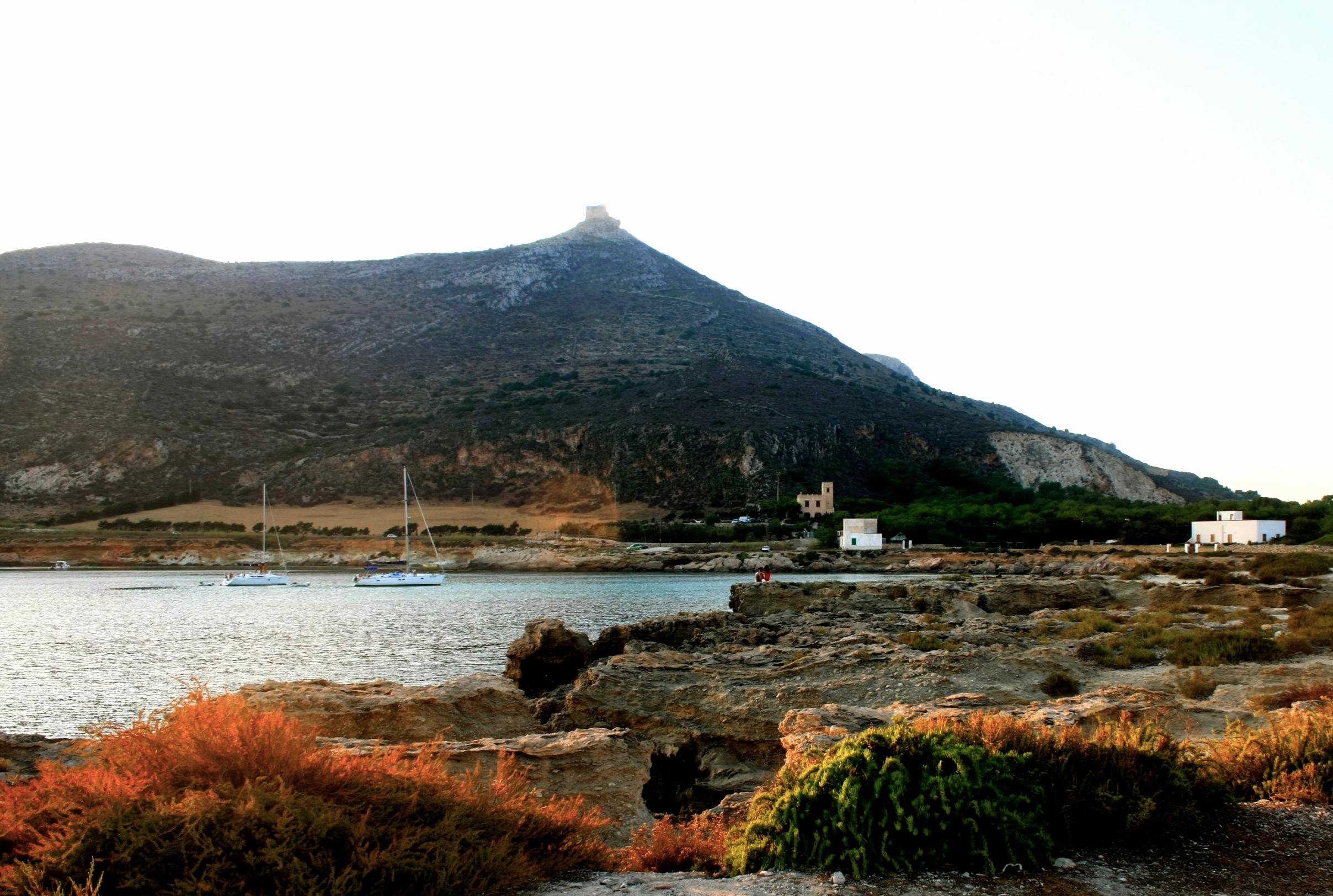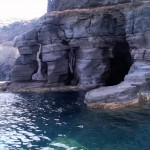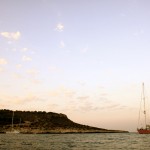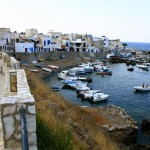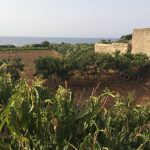The most south-eastern island in Italy
Sicily by boat: Favignana island
The butterfly of the Mediterranean Sea
Favignana is the largest among the Aegadian islands, in the shape of a butterfly (almost our Mediterranean Guadeloupe), and it’s the closest to Trapani. It is also the most touristic one. When we arrive there, with our splendid boat, Adriatica, the harbor is full of people and boats.
The history of Favignana is very significant. First the Greeks named it Egusa (full of goats), then the Arabs Hermit Island (there are some signs of hermitages in Mount Santa Caterina). Later the Phoenicians settled here (I, Syusy, found graffiti representing the Phoenician goddess Tanit) and finally the Romans arrived (here they produced the garum, that is a concoction of spoiled fish, which sailors used to eat).
There are many touristic and landscape attractions in Favignana. We were astonished in particular by the caves, that well characterize the history, the economy and the environment of the island. Favignana is made of calcarenite, a kind of limestone composed of organic material, that is millions of micro-organisms, such as coral; therefore it is very friable. There are amazing caves here, which build multiple quarries and tunnels ten meters below ground level. They even built a very nice hotel at the bottom of a cave.
Our friends from Favignana tell us that the caves have always been sort of houses for the locals, since they used them as shelters from the wind. That’s why inside the caves you can find the famous Sirocco rooms. And it is not a case that the etymology of Favignana derives from Favonio, the warm wind from the southwest.
The economy of the island grounds on agriculture, fishing and mining. And all the three branches have been absorbed into the tourism industry. In effect an intelligent and cautious tourism industry should not erase the old traditions and activities of a country, on the contrary it should appraise them.
Syusy & Patrizio
Video Full text: Favignana
Slow Tour by boat along Sicily’s coastline.
Favignana, the Egadi Islands, 4 miles off the coast of Trapani.
The Greeks called it Aegusa, i.e. “goat island”.
For the Arabs it was the island of the hermit who stayed on the mountain.
Poets call it the butterfly on the sea, because of its shape.
Let’s go and take a look at Favignana’s caves.
The history is recorded in the rock.
On this road you can still see the signs of the cables that descended right down into the caves.
There are Phoenician tombs on the mountain.
Let’s enter Favignana’s oldest cave.
There’s a depiction of the Goddess Tanit here, the deity venerated by the Phoenicians.
It’s massive in here; it looks a bit like Abu Simbel.
One can almost get lost in the dark tunnels, so we ask some of the locals for advice.
My grandfather Benedetto, nicknamed the Jailer, worked here and knew everything.
We finally manage to make our way out of the tunnel.
The tunnel continues on into the mountain.
Favignana’s ancient and disused caves are used as dwelling places.
Here, for example, there’s an ultra-modern hotel!
You create a void and within that void you live, it’s like a protection.
The famous sirocco rooms are all dug down into the rock, where it’s cooler.
Favignana had an economy that was split into three major sectors.
Farming, fishing and quarrying for calcarenite,
which differs from tufa because its origins are organic – they are tiny creatures.
They’re types of molluscs, that were sedimented during the ice age and
shaped by the winds right to the centre of the island.
The island’s first natural port is Phoenician in origin.
Let’s go and have a look at the cave with the sign of Tanit.
Is there enough light in here?
We won’t need sunglasses.
It seems incredible to think that we are in such an ancient natural port looking for Tanit –
it’s an alphabet!
Tanit is down there, I saw a similar archaic shape in Delphi.
She is shown as a trident, with up stretched arms.
This is associated with Poseidon, the god of the sea and with the inheritance of Apollo in Greek classical mythology.
There’s another word here: Ciro!
Is this associated with the Persians or perhaps a pizza-maker who came here with his girlfriend?
Ever since ancient times and still today, man has wanted to leave a mark of his presence.

